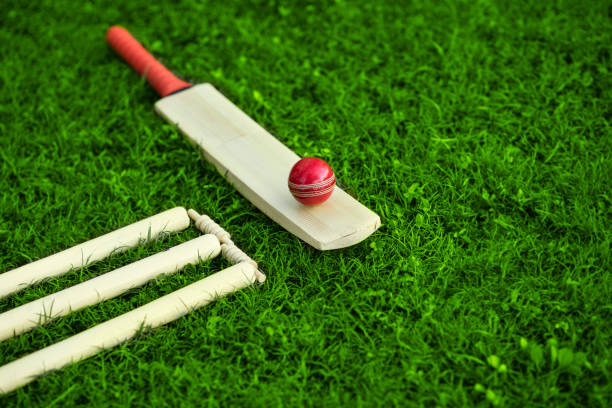One of the world’s most beloved sports, cricket, carries an interesting history and evolution. This globally recognized sport has left many pondering over its unique name – “cricket.” Is there a reason behind this peculiar name that aligns with the sport’s characteristics, or is it just a mere coincidence? Let’s explore this exciting and enlightening journey of how cricket got its name and the evolution it has seen over the centuries.
The Origin of the Name “Cricket”
The term “cricket” has a rich history that traces back centuries ago. Although the exact origin of the name is debated, the most prevalent theory states that the name “cricket” comes from the Old French word “criquet”, meaning a kind of club or stick. This aligns well with the bat that we see in the modern game, which can indeed be likened to a club or a stick.
In the early forms of the game, which can be traced back to the 16th century in southeastern England, the term “creckett” was used to describe a game played by children. This game involved a wooden stick and a ball, thus bearing an uncanny resemblance to what we now know as cricket.
Eventually, over time, “creckett” metamorphosed into “cricket,” and the term was broadly accepted as the official name of the sport we know and love today.
The Influence of Cricket on Global Culture
The importance of cricket extends far beyond the cricket shop or the playing field. This iconic sport has made an indelible mark on global culture and has significantly shaped societal norms and values. The popularity of cricket has resulted in a worldwide fan base, with millions tuning in to watch international cricket matches, supporting their favorite teams, and celebrating the sport’s rich heritage and traditions.
The culture of cricket has influenced numerous aspects of society, from the fashion industry, where cricket attire has inspired casual and formal wear, to literature and cinema, where countless novels, films, and documentaries have focused on this beloved sport.
The language of cricket, including terms like “sticky wicket,” “hit for six,” and “bowled over,” has permeated everyday vocabulary, indicating the sport’s significant influence. Cricket has even shaped the food industry, with many eateries and cafes featuring cricket-themed menus and decorations.
Evolution of Cricket and Cricket Shops
As cricket evolved, so did the equipment associated with it. Cricket shops, as we know them today, started to appear around the late 18th century, providing cricketers with the gear necessary for the game. This trend continued into the 19th century and saw rapid growth as cricket gained popularity worldwide.
These cricket shops not only provided the necessary equipment such as bats, balls, and wickets but also played a crucial role in the sport’s advancement. They introduced innovations in cricket gear, leading to changes in game strategies and player performance. Today, a quick visit to a well-stocked cricket shop will reveal the evolution and sophistication that the sport has experienced over time.
From the humble beginnings of a child’s pastime to the technologically advanced sport that it is today, cricket shops have mirrored the game’s evolution. They stand as silent testaments to the history and the development of the game, from “creckett” to cricket.
Conclusion
The intriguing journey of cricket’s naming provides a deeper understanding of the sport’s roots and how its transformation over time has influenced its name. While we may never know the definitive truth behind the name “cricket,” the sport’s rich history and worldwide popularity make it a fascinating topic for exploration.
Next time you step into a cricket shop, take a moment to appreciate the evolution of the sport, from a simple game of stick and ball to an international sensation. The cricket shop, like the name of the sport itself, carries with it the legacy of the game, its evolution, and its undying spirit.
